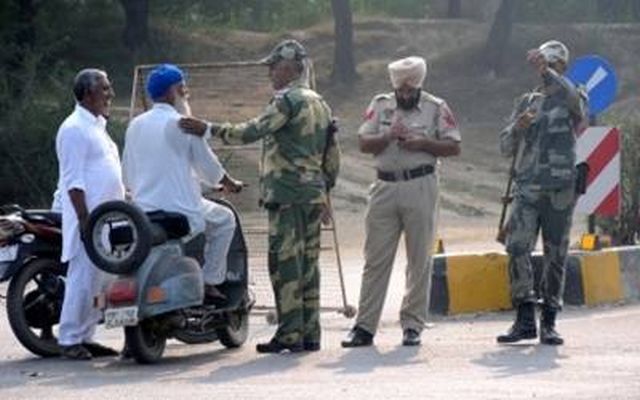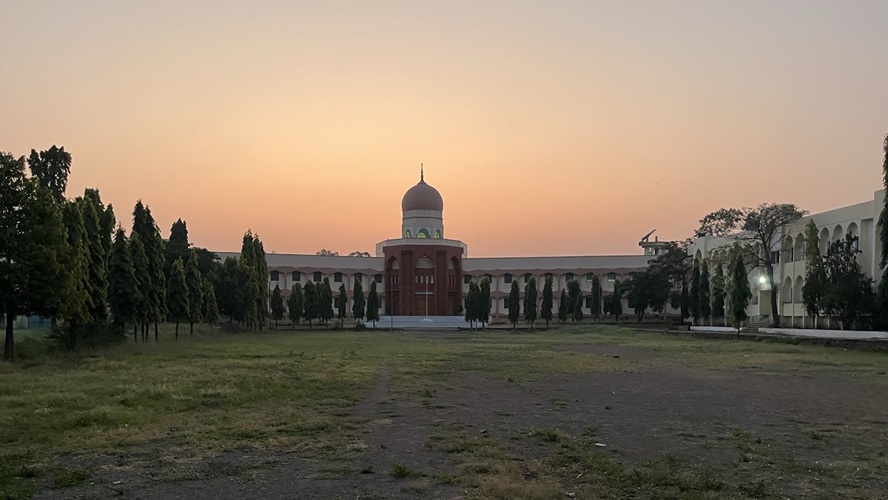The gradual economic decline of Assam after the partition of India slowly led to restiveness among the local people
Soroor Ahmed |
More than a demographic factor, it is the change in geo-political realities after August 15, 1947 which is responsible for the frequent restlessness in North-East, which was once again on the boil exactly a year ago after the enactment of the controversial Citizenship Amendment Act.
The situation had reached such a pass that it has led to the postponement of the December 16, 2019 summit-level talks in Guwahati between PM Narendra Modi and his visiting Japanese counterpart, Shinzo Abe. The latter had recently resigned as Japanese PM and in the last one year no such meeting could be materialised.
Japan was to invest Rs 13,000 crore in the infrastructure development projects in the North-East. The Bangladeshi Foreign Minister had then cancelled his trip to New Delhi where he was to attend the Indian Ocean Dialogue on December 13, 2019.
It was 73 years ago that the then United Assam, once a leading economy––along with other smaller states–became landlocked. The region lost two important ports of Dhaka and Chittagong to East Pakistan and the inland port of Guwahati started losing its economic attraction. Rail and road routes linking it to mainland India had to pass through a narrow corridor of land (just 22 km wide) between East Pakistan–now Bangladesh–and Nepal.
The entire region had to now rely on the port of Kolkata, a far-away city. Transporting goods through freight trains and trucks is no easy job now. It takes weeks, even months, to reach cities like Agartala, Kohima, Dibrugarh , Aizawl, Imphal and even Guwahati.
The exploitation of land and forests of the North-East started just after the Battle of Plassey and the gradual occupation of East India by the British. Well, that was the time when the Industrial Revolution had not actually started.
The British virtually looted the rich jungles of Assam and adjoining areas. In fact, the entire East India was famous for timber, herbs, plants as well as agriculture products. Gradually, they started growing tea in the highland right from North Bengal to the eastern end of Assam.
When the original population started resisting this plunder of their territory, the British brought Santhals and other tribes from the Chotanagpur region. That was in the mid-nineteenth century when there was no railway track to the region. This practice of forcibly uprooting tribals from the Chotanagpur region (now in Jharkhand) and settling was done with a deep-rooted motive.
The Santhals and Mundas of this region had revolted several times in the second half of 19th century. Thus, with one stone, the British imperialists hit two birds. They not only got a large number of hands to work in tea gardens of the North-East and in other related works, but also pitted Santhals against the original population of Assam and other states.
At the same time, the British cleared the Chotanagpur region of rebellious tribes. As the world had made a lot of scientific development between late 18th and mid-19th centuries, it was now possible to discover rich minerals in hilly regions of what are now called Jharkhand, Odisha and Chhattisgarh.
In the meantime, the North-East continued to attract outsiders. Not just Adivasis, but workers from Bengal, Bihar, UP, etc. also started settling here. And this notwithstanding the fact that Assam had little manufacturing activities.
On the other hand, the gradual industrialisation of the Chotanagpur Plateau in the late 19th and early 20th centuries paved the way for the coming of a large number of people from the rest of the country to these places. Gradually, Jamshedpur, Ranchi, Rourkela, Bokaro, Bilaspur, Dhanbad etc. emerged as industrial hubs. The local Adivasis were tamed by the policies adopted by the British.
Both the mineral rich Chotanagpur and tea gardens of the North-east were slowly flooded by the traders from across the country. So, it was against ‘mahajans’ and ‘sahukars’ (money lenders) that the Jharkhand Mukti Morcha first launched its movement in the1970s.
In the same way, the gradual economic decline of Assam after the partition of India slowly led to restiveness among the local people. The processing plants of tea were mostly situated in Kolkata as it was easy for the MNCs to export the end products.
By late 1970s, discontent started increasing among the local people of Assam. By 1979, a full-fledged movement was launched by All Assam Students’ Union. The anger was initially targeted against the big businessmen, especially Marwaris, whom they considered as exploiters.
But the big moneyed class both in Jharkhand and the North-East dexterously handled the challenge. They adopted the strategy of indirectly funding the movements against them in both these regions. The ire, which was initially directed against the same rich and powerful, now got turned against the lesser mortals and the disadvantaged class.
If the lower middle class workers from Bengal, Bihar, etc. became victims of the anger of Assamese, in the Jharkhand region of the then Bihar, ‘dikkus’ (outsiders) from other states were targeted.
Ironically, the Adivasis who were forcibly settled in Assam started bearing the brunt of the original people of that state. Hundreds of them have been killed in several massacres at the hands of the Bodos and other tribes. Incidentally, these Adivasis from the Chotanagpur region settled in Assam do not enjoy the Scheduled Tribe status there.
Then the saffronisation of both these regions began. First started a spate of communal riots in the industrial cities of Jamshedpur, Rourkela, Ranchi, Hazaribagh, Jabalpur etc. What is interesting is that these cities had, unlike the rest of north India, no history of communal riots in the past.
They were new upcoming business centres which were rocked by violence between 1960 and 1990. The saffron outfits used the local tribal populations, mostly displaced by industrialisation, against the Muslims, who, like other people from rest of the countries, settled in these places.
Curiously, most of these riots took place during the Ram Navami festival.
In Assam, the movement against the outsiders gradually turned against the Muslim-speaking Bengalis. They were dubbed as Bangladeshis. In one such massacre in Nellie, about 2,200 Bengali-speaking Muslims were killed on February 18, 1983.
The creation of Bangladesh in 1971 was used as an excuse to complicate the matter. What is ironic is that 36 years later, none from Nellie was excluded from the NRC. Not only that, Muslims hardly figured in the exclusion list in at least five districts of Assam where they have substantial populations. This clearly suggests that they were not from across the border.
While the then Prime Minister Rajiv Gandhi, with the help of the August 15, 1985 Assam Accord, tried to end the movement, little headway could be made to bring back Assam to the path of economic development. It is true the railway track conversion work was taken up in a big way in Assam and some development was made in the infrastructure sector, too. The East-West Porbandar-Silchar Corridor is one of them.
Unlike in the past, people of the North-east now started going out for jobs and education.
In the meantime Jharkhand was carved out from Bihar on November 15, 2000 by the then Atal Bihari Vajpayee government. The state had become a sort of a BJP bastion.
The party has been in power for more than 15 out of 20 years. But in January 2015 something unusual had happened. Raghubar Das, a non-tribal from outside the state––he is essentially from undivided Madhya Pradesh––became the Chief Minister. He hails from Teli (Sahu) caste. This had happened to the state created in the name of Adivasis.
On the other hand, the Asom Gana Parishad, which originally launched the movement in 1980s, is now playing second fiddle in the alliance government led by BJP.
In Jharkhand, too, the JMM had to join hands with BJP. But that was in the past.
Today, the tribals are alienated a lot because of some major decisions taken by the Raghubar Das government, especially related to land acquisition.
While Jharkhand voted out the Raghubar Das government exactly a year ago—the CM lost from his own constituency—the North East, especially Assam, was witnessing a widespread movement against the Citizenshidp Amendment Act leading to the death of several persons.
If over 10,000 Adivasis were charged with sedition after they launched Pathalgadhi, a movement against the land acquisition and forest policies of the then Das government, Assam is gearing up for the assembly elections next summer. While the Congress had recently lost former Chief Minister, Tarun Gogoi, the problem with BJP is that Bengal, too, is going to poll. What would be its stand on the CAA in these two states, which have totally contradictory type of problems?
Several years ago, a plan was mooted to overcome the geographical hurdle on the path of development of the North-East. It was planned to build a Bhutan-Bangladesh-India-Nepal Corridor.
It was also proposed to use Dhaka and Chittagong as transit ports so that the economy of the North-East could be revived.
These moves would not yield results immediately. But before the fruition of these projects, the Centre had opened the Pandora Box of NRC and CAA. Many people apprehend that Assam may once again be thrown back to the early 1980s. The local people fear that Bangladeshis, if allowed to settle, would grab the job and other opportunities.






0 Comments